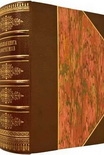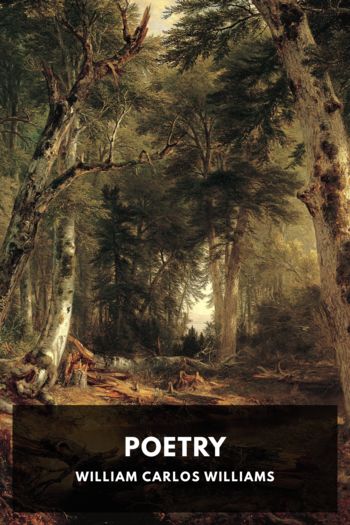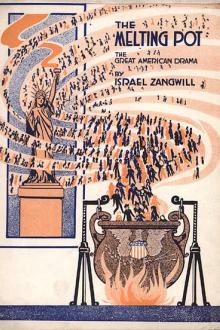No Modernism Without Lesbians, Diana Souhami [love books to read txt] 📗

- Author: Diana Souhami
Book online «No Modernism Without Lesbians, Diana Souhami [love books to read txt] 📗». Author Diana Souhami
Bryher pretended, up to a point, to be the daughter her parents insisted she was. They would not, in their house, allow her to be anything else. In the front drawing room, on a gold easel, behind a stand of cut flowers, was a life-size portrait of ‘Dolly’ in a lady’s chair, wearing white tulle with a blue sash to match her blue eyes. It was by Sir Luke Fildes, who had painted King Edward VII in his coronation robes. Lady Ellerman claimed that the sash was sent back twice to Paris to be redyed before it matched exactly the true blue of her daughter’s blue blue eyes.
McAlmon felt trapped. He would get through dinner, smoke an after-dinner cigar with Sir John in the library, then, in collusion with Payton the butler, sneak out to the clubs. He tried to make literary connections but found London culture respectable and prim. Sir John offered to find him an editorial post on one of his journals: Tatler, The Sketch, The Sphere. McAlmon had different publishing plans in mind. He had tea with T.S. Eliot and met Wyndham Lewis but failed to persuade Sir John to buy Lewis’s paintings. He was appalled at the repression of Bryher’s brother, who had to wear a bowler hat when he went out, had been sent away to Malvern College, which he hated, and who had no friends. Of Sir John Ellerman, McAlmon wrote in his memoir:
moneymakers on the grand scale are monomaniacs and fanatics and self-willed. As regards finance Sir John had that thing which need not be looked upon with awe, genius, but in many other respects he was a perfect case of arrested development.
Pretence of togetherness by the newlyweds at South Audley Street was a dinnertime affair. London was a stopgap. Bryher and McAlmon were both writing novels. H.D. worked on an autobiographical prose-poem, ‘Paint it Today’, and a book of poems, Heliodora. She wrote to Marianne Moore that Bryher was ‘wonderful, so good, intense & radiant, a baby Maecenas I call her’. Maecenas was an ancient Roman patron of poets, including of Horace and Virgil. McAlmon was impatient to head for Paris and to get away from them all. Bryher intended to make a base for herself and H.D. in Switzerland as soon as she could convincingly do so.
writers on the move
By the summer of 1921, McAlmon was in Paris and Bryher and H.D. were at the Riant Chateau in Territet in Montreux, Switzerland. This became their base until 1930. Switzerland was a tax haven for Bryher’s inheritance. Their apartment looked out over Lake Geneva, the Alps towered behind them, the climate was agreeable. Perdita was brought out for visits and holidays by a Mrs Dixie from the Norland Nursery. Towards the end of the year, H.D.’s mother joined them. She stayed as part of the family for four years and travelled with Bryher and H.D. to Italy, Greece and Constantinople. On Perdita’s visits, she looked after her. When in London without Bryher, H.D. stayed at the Hotel Washington in Curzon Street.
Bryher and H.D. were writers on the move. While Bryher travelled with H.D., her parents thought she was with McAlmon in Paris. Sylvia Beach acted as go-between, posted on Bryher’s letters to Lady Ellerman so they would have the Paris postmark and forwarded mail to Bryher from her parents. ‘It may have been wrong but it saved my parents from a lot of anxiety and I cannot think it did any harm,’ Bryher said.
She and H.D. travelled by train through Egypt. They survived sandstorms, visited the tomb of Tutankhamun, stayed at Luxor, cruised up the Nile, visited the Temple of Edfu, walked in the gardens of the Winter Palace Hotel, visited mosques and Coptic churches and bought fly whisks and turquoise cats and giant scarabs from bazaars, drove in a sand cart to the tombs in the Valley of the Kings, admired Karnak by moonlight… On Capri they stayed at the Hotel Quisisana with Nancy Cunard and Norman Douglas, who was ‘wildly, gloriously drunk’.
Paris and Contact Editions
In Paris, with Bryher’s money and editorial input, McAlmon set up Contact Editions. He ran the enterprise from his room at the Foyot hotel in rue de Tournon; its restaurant was considered one of the best in the city. Contact’s publishing legend ran:
Contact Editions are not concerned with what the ‘public’ wants. There are commercial publishers who know the public and its tastes. If books seem to us to have something of individuality, intelligence, talent, a live sense of literature, and a quality which has the odour and timbre of authenticity we publish them. We admit that eccentricities exist.
We will bring out books by various writers who seem not likely to be published by other publishers for commercial or legislative reasons.
That was an invitation to a host of expatriate writers at odds with the censors and mainstream thought. Between 1922 and 1930, Contact published, often for the first time, the work of Gertrude Stein, Djuna Barnes, H.D., Gertrude Beasley, Mary Butts, Mina Loy, as well as Ernest Hemingway, Ezra Pound, William Carlos Williams, Ford Madox Ford, Nathanael West, and of course McAlmon himself. All were paid with Bryher’s money. Bryher’s Two Selves, which included the account of her meeting with H.D., was published by Contact in 1923.
With McAlmon as commissioning editor, Contact published Hemingway’s first work, Three Stories and Ten Poems, and took on the mammoth task of publishing Gertrude Stein’s 500,000-word The Making of Americans. He also published his own short stories, set in the American Midwest, his Grim Fairy Tales, about the homosexual subculture of Berlin, and his novel Village, a fictionalized account of the South Dakota town where he grew up and found his first love – Gene Vidal, the novelist Gore Vidal’s father, all of which mainstream publishers rejected as obscene. Seventy years later, in 1995, in a memoir, Palimpsest, Gore Vidal wrote of McAlmon’s book: ‘It is curious – to





Comments (0)